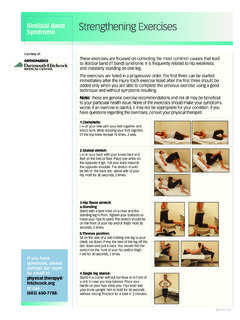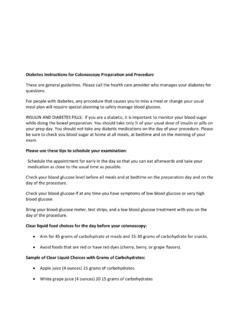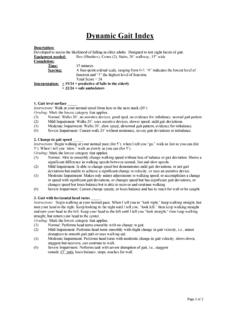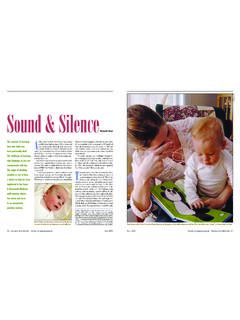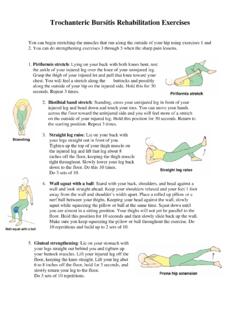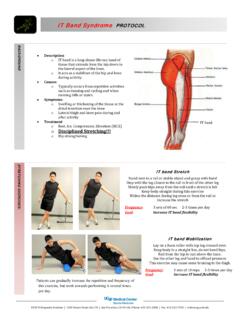Transcription of Iliotibial Band Syndrome Strengthening Exercises (IT Band)
1 These Exercises are focused on correcting the most common causes that lead to Iliotibial band (IT band ) Syndrome . It is frequently related to hip weakness and instability standing on one leg. The Exercises are listed in a progressive order. The first three can be started immediately after the injury. Each exercise listed after the first three should be added only when you are able to complete the previous exercise using a good technique and without symptoms resulting. Note: These are general exercise recommendations and not all may be beneficial to your particular health issue.
2 None of the Exercises should make your symptoms worse. If an exercise is painful, it may not be appropriate for your condition. If you have questions regarding the Exercises , consult your physical therapist. : Lie on your side with your feet together and knees bent. While keeping your feet together, lift the top knee. Repeat 15 times, 2 sets. stretch: Lie on your back with your knees bent and feet on the bed or floor. Place one ankle on the opposite thigh. Pull your knee towards the opposite shoulder.
3 The stretch should be felt on the back and lateral side of your hip. Hold for 30 seconds, 2 flexor stretch: : Stand with a bent knee on a chair and the standing leg in front. Tighten your buttocks to move your hips forward. The stretch should be on the front of your hip and/or thigh. Hold 30 seconds, 2 position: Sit on the side of a bed holding one leg to your chest. Lie down. Press the heel of the leg off the bed down and pull it back. You should feel the stretch on the front of your hip and/or thigh. Hold for 30 seconds, 2 times.
4 Leg stance: Stand in a corner without furniture or in front of a sink in case you lose balance. Place your hands on your hips. Keep your hips level and your trunk upright. Aim to hold for 30 seconds without resting. Practice for a total of 2 minutes. Strengthening Exercises Iliotibial band Syndrome Courtesy of:OrthOpaedicsIf you have questions, please contact our team by email to or call (603) hip motions: Practice standing on each leg. Begin with no band and progress to using a stretchable band .
5 With each position, keep your hips level and your trunk upright. Repeat 10 times in each direction, 2 : Standing upright, move one leg : Standing upright, move one leg to the : Standing upright, move one leg : Begin the exercise by standing upright on one leg that is slightly bent. Bend your trunk forward as you bring the other leg back. Complete the exercise by touching an object on the floor. Repeat 10 times, 2 sets. Foam roll massage optionsSide of thigh: Lay on foam roll on your injured side so that the roll sits under the side of the leg just below the hip joint.
6 Support the weight of your body on your hands and opposite leg which is crossed out in front to help you balance. Roll back and forth from below the hip until just above the knee. NOTE: If your IT band is really tight this may be a painful exercise. You can adjust the amount of pressure you apply to make this more tolerable by helping to support the weight of your body with your uninjured leg. As your IT band becomes looser the exercise will become less uncomfortable. Gluteal muscles: Lay on foam roll on your injured side so that the roll is under your gluteal muscles.
7 OrthOpaedicsStrengthening Exercises Iliotibial band Syndrome
